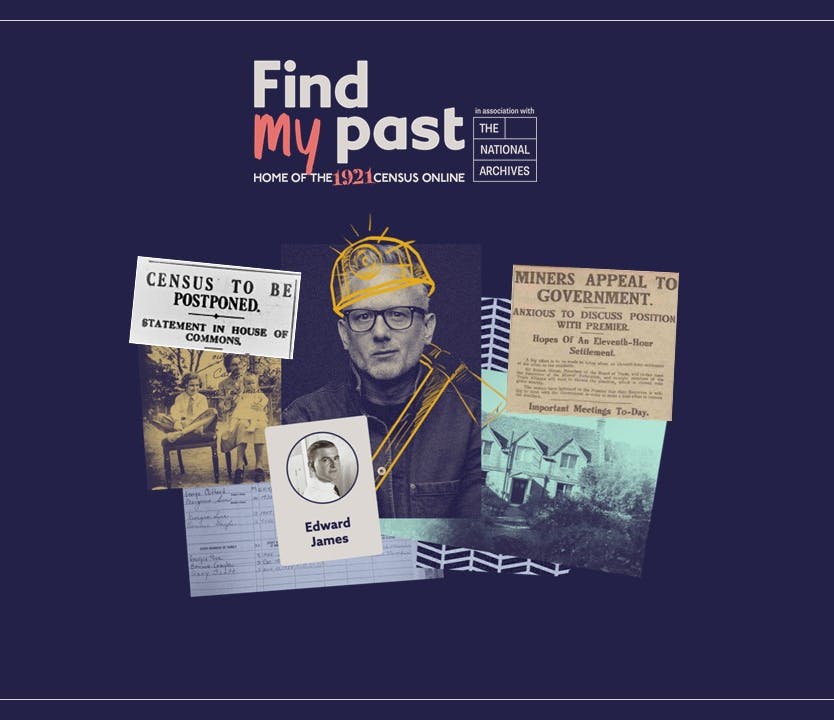5 simple steps for tracing First World War ancestors
3-4 minute read
By The Findmypast Team | January 6, 2020
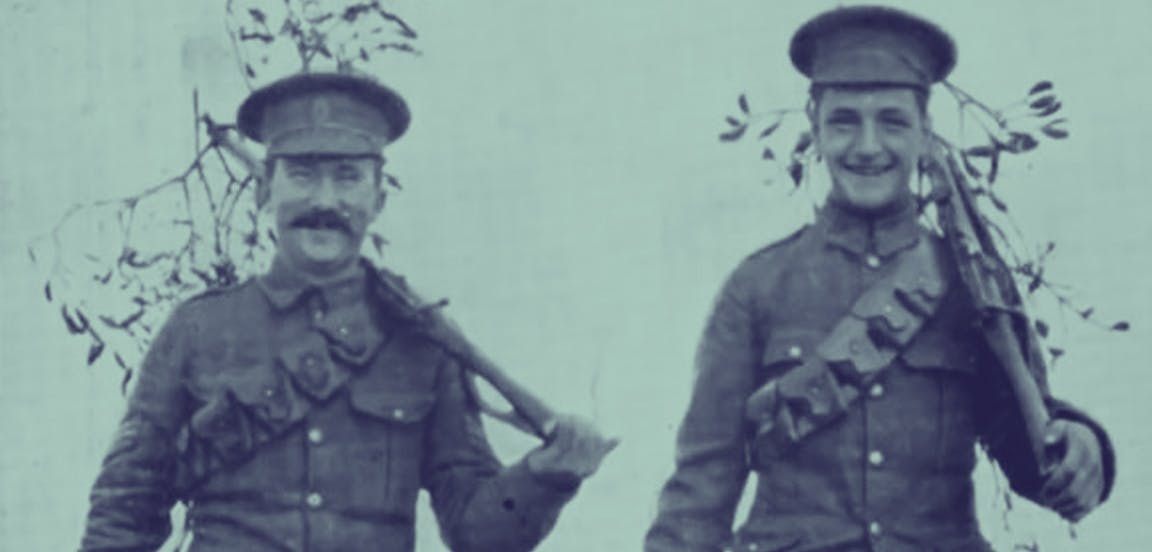
Discover how to trace First World War soldiers and unlock their remarkable life stories.
Almost every family has a connection to the First World War and you've come to the right place to discover more about yours. At Findmypast, we've got the most comprehensive collection of First World War resources available. A collection that includes millions of Army, Navy and Air Force records, carefully indexed to include many more soldiers' names than you'll find anywhere else online.
Findmypast is the best place to start searching for your First World War ancestors and to help you you get started, we've put this quick guide together with the steps you need to start finding your bravest family members.
1. Ask your relatives
As with all family history research, the best place to start is with those closest to you. Ask your relatives what they remember; perhaps they have photos, medals, letters or diaries which have been passed down to them. As soon as you have a name and a date, add it to your online family tree and you are ready to start investigating.
If you know that your ancestor was born in the UK between 1878 and 1900, there's a good chance they would have served in the Great War. 5.7 million men from the British Isles served, and as the population at that time was only 46 million (including women) it's quite likely that they would have either volunteered or been called up.
2. Search family records
Sometimes it's easier to trace those who died in the war than those who survived. Details of casualties were well recorded, and the military units, date of death and location of their burial or commemoration were all kept. If your First World War ancestor died while serving with British armed forces or in the service of one of Britain's Dominions, he or she should be remembered by the Commonwealth War Graves Commission on its Debt of Honour register. You can search this database free of charge from the CWGC home page.
For those who survived the war, valuable information can be found in our medal rolls and service records. Below, we've got more specific details on how to research those who served in the Royal Navy, British Army and Royal Air Force.
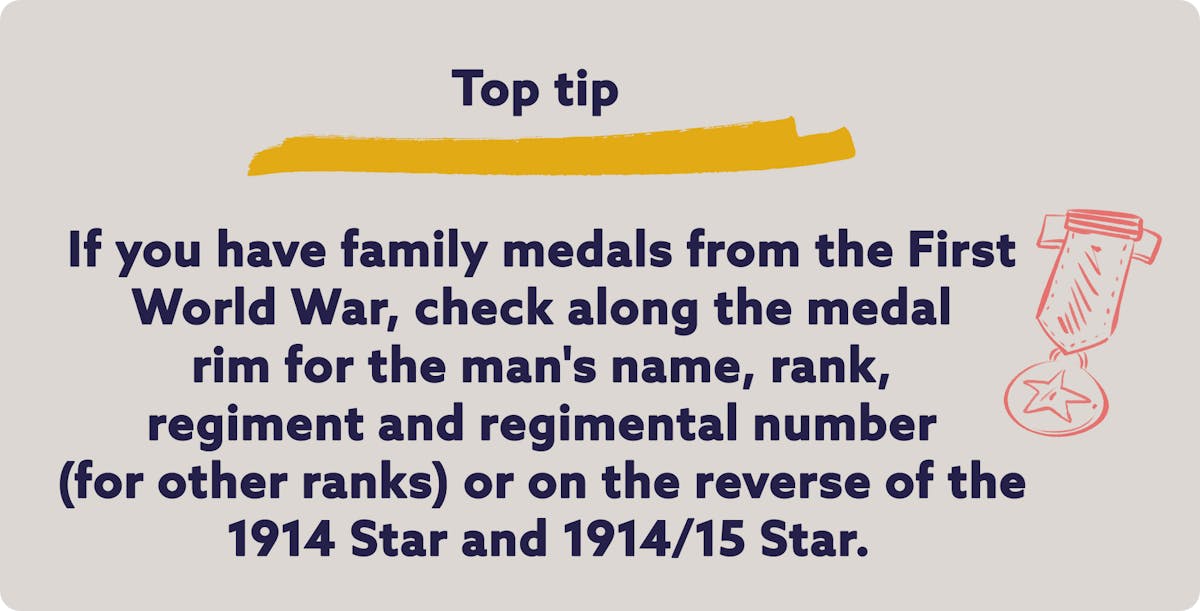
Don't forget to also check marriage certificates for those who were married during the war. If a man was serving at the time, the details of his service will often be recorded in the occupation field of his marriage certificate.
3. Be aware of missing First World War records
During the First World War, the British Army grew dramatically from under 750,000 in 1914 to over 5 million in 1918. The details of every man who served were carefully recorded and catalogued but unfortunately, around 60% of their service records were destroyed during enemy bombing in the Second World War. We have, however, comprehensively indexed all the surviving ones.
These records cover all ranks, all three service branches (Army, Navy and Airforce) and date from 1760 up to 1921. If your ancestor continued to serve in the army after 1921, his or her records will still be with the Ministry of Defence.
Service records, if they survive, can proved a wealth of information about your ancestor’s life and military career. Attestation papers (the forms filled out on joining the military) can reveal detailed physical descriptions, home addresses, peace time occupations and the names of family members. Later pages may list the promotions or qualifications they gained, details of any awards or punishments they received as well as important dates and locations relating to their service. Pension papers may provide clues as the length and nature of their service as well as any disabilities incurred, while discharge papers can help you gain a better understanding of where your ancestor went and what they did after demobilisation.
It's important to note that before the Royal Air Force was created in 1918, the Royal Flying Corps fell under the control of the British Army. So don't forget to search the British Army Service records collection if you're looking for a First World War airman.
4. Get to know their regiment
Don’t just focus on records that directly reference your ancestor. Regimental histories, war diaries and trench maps can help you gain a much better understanding of your ancestor’s wartime experiences.
Unit War Diaries are the official military accounts that give day-by-day details of the action, locality, conditions, etc of the battalion. They are unlikely to mention your ancestor by name, unless they were an officer, but they make valuable reading about life on the Western Front and are available on The National Archives website.
Many regimental histories are also available online. As well as providing you with a good account of the battles and conditions the regiment endured, as well as where they were stationed and when, many will also include first-hand accounts from those who actually who were there.
5. Don’t forget newspapers
Findmypast’s unmatched collection of historical newspapers can be an absolute goldmine when it comes to finding your Great War ancestors. They will reveal how their local community experienced the war, giving valuable context to your research. While reports on troop movements and developments at the front can help you understand your ancestor's place in the bigger picture.
Newspapers are also probably the best tool at your disposal for finding a photograph of your military ancestor.
Regional newspapers diligently shared news relating to local lads at the front including reports on casualties, awards, promotions, mentions in dispatches and even letters sent home to loved ones. Many of these reports included photos of the soldier in question.
Each and every person who went to war between 1914 and 1918 deserves to be remembered. Play your part in preserving your family's legacy by uncovering your ancestor' shocking, heartbreaking and amazing war stories today.
Related articles recommended for you

Explore over 1.8 million new records from Canada and the British Isles
What's New?
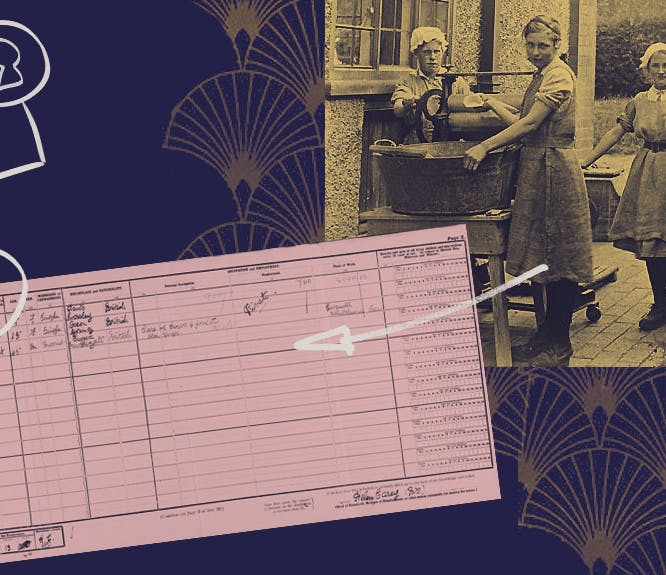
What can we learn from counting rooms in the 1921 Census?
History Hub
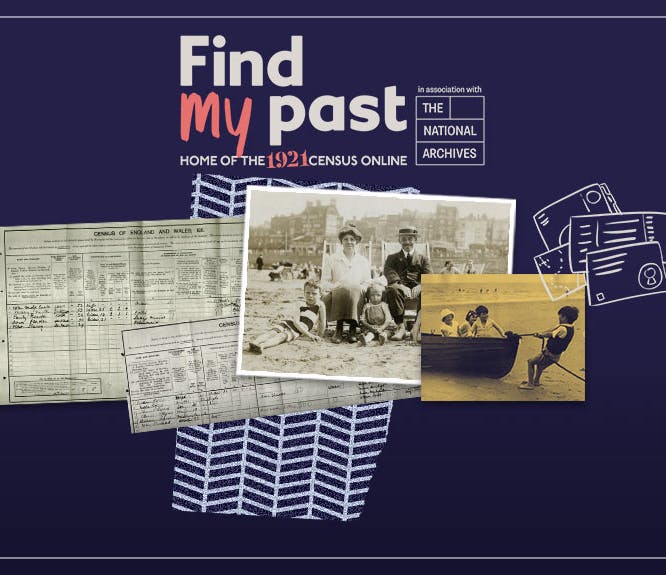
Seaside escape or city break? Discover the incredible rise of tourism in the 1921 Census
History Hub
